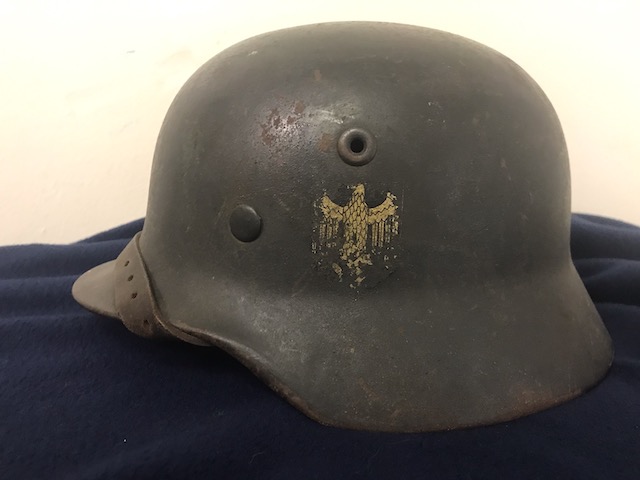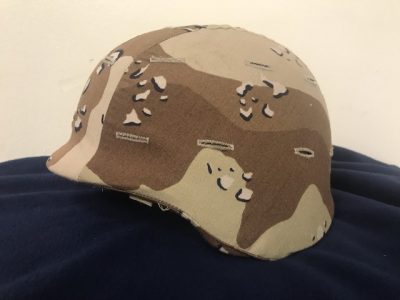After using the same helmet through three major wars and for more than 40 years, the U.S. Armed Forces made a radical switch in the early ’80s. That’s when they introduced the Personal Armor System for Ground Troops, or PASGT helmet. Molded from a more shrapnel-resistant Kevlar, as opposed to steel, the new combat headgear offered additional protection by covering the ears and more closely hugging the head. But why did it look so familiar?
That’s because its design mimics the iconic helmet used by Germany during the two world wars. One of the most popular souvenirs brought from Europe by GIs serving there during and after WW II, the “Stahlhelm” had a unique shape that instantly identified it as being issued by the German military. Millions of them were available, so obtaining one was no problem. They were small enough to easily fit into a duffle bag and be carried home, or in a box to be mailed home from APOs (Army Post Offices) throughout the European Theatre of Operations.
Although German combat helmets retained the same basic design, there seemed an endless variety, making them a collector’s delight. There were variances in color, three different patterns (M35, M40, and M42) and each branch of the military, along with paramilitary organizations that had their own distinct markings. There were also camouflage varieties and a highly sought-after helmet designed for use by airborne troops.
Adopted by the German military in 1916, the design proved so superior that the U.S. Military adopted it when they redesigned the helmet they had been using since 1941. It first saw action with U.S. forces in the invasion of Grenada in late 1983 and was widely used by U.S. forces during the Gulf War in 1990-1991.
Pictured below is German WW II M 40 helmet, identifiable by its rolled edge and stamped air vent. The German national eagle is in gold, revealing the helmet as being issued by the navy. Pictured above is the U.S.-issued PASGT helmet. This model has a camouflage cover designed for use in the deserts of Kuwait and Iraq. The cover can be changed to match the terrain. Due to its remarkable similarity to its German predecessor, it was nicknamed the “Fritz Helmet.”




0 comments on “Why does that helmet look so familiar?”